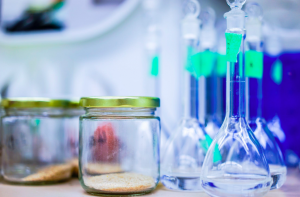Labs are an important part of science education. Let the children learn about the items in a lab and become familiar with how they are used. This is a great way to keep them interested. If you are new to chemistry, the lab might look like a frightening place. Here is a look at the items you will find in your chemistry lab.

Glassware. Glassware is a common sight in chemistry labs. These items will include beakers, vials and test tubes. These items are used for experiments and will be a part of your daily life in the chemistry lab.
Pipets. These are tiny little items that are used to move a small amount of liquid to certain objects. These usually move things from one vial and beaker to another. These are almost always thrown away after use so liquids do not mix together.
Bunsen Burner. These are tiny little burners with flames on them. In chemistry you will need to heat specific items up and see if they boil or what happens to them. This will help make the heating process start up really quickly.
Centrifuge. Chemistry labs will usually only have one of these. These are huge machines that are used to spin objects in a circular motion. These are used to mix liquid or see if items separate from one another. The centrifuge is used for chem and bio topics like DNA or liquids.
Buret. This is an object that will place liquid into a tube or object at specific times. This will usually be used to test pH levels.
Teaching is rewarding, but all too often, your students will not be interested in what is being taught. When it comes to science, there are two methods you can employ: you can either tell the students the principles and information or you can show them.
Telling the students is boring — for you and your students. The best way to teach a principle is by allowing the students to see it in action. In fact, when possibly you should allow the students to observe what happens and then let them come to their own conclusions. At that point, you can then teach them the principle they’ve figured out on their own.
One way to do this is to have multiple stations with a different activity at each station that supports the principle that you’re teaching. This gives students multiple ways to learn and splits up the class into small groups so there aren’t too many people trying to do the experiment at the same time. It’s great for all types of learners and allows students a chance to be active instead of being forced to sit still at their seats.
There are tons of activities you can try with your students. Some are simple and don’t require a lot of preparation. Others are complex and require students to use their creativity in order to solve the problem. The best activities are ones with multiple solutions because as long as the solution works, it’s right. This really makes students think hard on how to solve the solution.
(Author – Simon P. of Denver Chiropractic Clinic)
Thank you to our newest sponsor, Denver Chiropractic Clinic! This highly experienced team of specialists want to support and encourage students nationwide who are interested in science, math, and technology.
